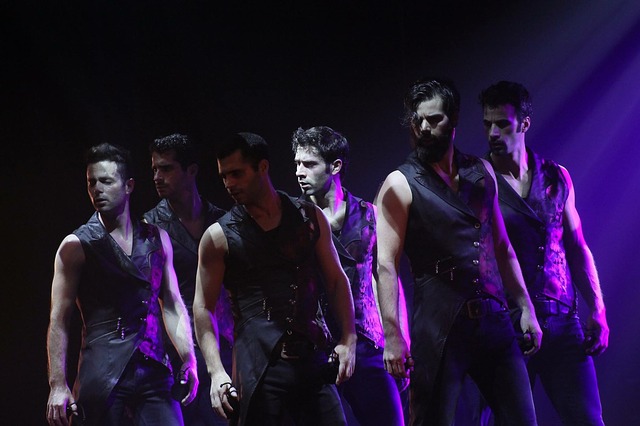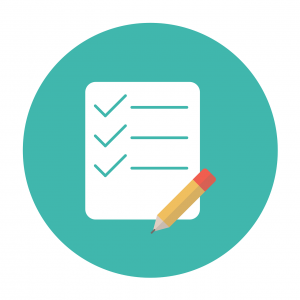Over the years, I have been fortunate enough to have had the pleasure and privilege (carefully choosing my words here) to evaluate dancers in the singing component of their audition onto the BA in Dance at the Liverpool Institute for Performing Arts. The whole process has always for me been equal parts excruciating and hilarious; hilarious for all the wrong reasons mind you. From the soul-crushingly abysmal to the cheek-bitingly, “don’t dare look at the accompanist or anyone at all for that matter” hilarious, where at the moment the poor soul leaves the room, you erupt into gales of laughter that take ages to bring under your control but on the upside provides you with the benefit of a full aerobic workout. Professionals are us.
Having been through this process now for a number of years, I can only surmise that the one cog in this whole pantomime that can truly determine whether this part of the audition is going to go well or not is the singing teacher. We really are the linchpin as to how well this part of their audition is going to go. And is usually goes appallingly. And there are a number of factors for this, factors that we can help with and factors that we can’t.
The Factors That We Can’t…
Dancers, like most of us, are pack animals. They travel in herds, politely called “cohorts” or “companies” or “troupes”. If you pick them off the herd, they go into full on “fight or flight” mode and that can be very difficult for some of them to deal with, bearing in mind that for most of us, the brain can’t tell the difference between a singing audition and being chased by a lion.
Dancers tend to wear their emotions close to the surface, in fact they use the whole surface of their bodies to allow us to experience exquisite highs and lows through their physical representations of story and song, and so it’s no wonder that they can let their emotions sometimes get the better of them. So be aware that physical manifestations of nerves can be very common.
The Factors That We Can…
We can give dancers, or anybody else for that matter, a fool proof way to ensure that they have complete control over themselves in a singing audition scenario. And we need to get the message out to as many singing teachers as possible. We can break the entire audition procedure down into very manageable steps.
- How to walk into a room
- How to address a panel/interviewer
- How to work with a pianist/accompanist
- How to leave the room.
Note that I haven’t mentioned anything about singing a song. That’s because I firmly believe that if you can give a dancer a sense of control and ownership of their audition then the singing will take care of itself – it still may be terrible, but at least they will have represented themselves professionally and allowed the evaluators to make an honest evaluation on the song itself, if that makes sense.
How to walk into a room
So you would assume that with dancers epitomising style and grace that entering a room would be a piece of cake right? Wrong. First impressions last. Here’s a list of do’s and don’ts.
Don’ts
- Don’t say “hiya” or “’y’alright?” when you walk into a room. That’s way too casual.
- Don’t just poke your head around the door to check if there is actually anyone in there.
- Don’t slouch or mooch up to the panel like a scolded child.
- Don’t fling open the door like you’re heralding the arrival of the Second Coming.
- Don’t jazz step, or flutter into the room on your tip-toes, walk like a normal human being.
- Don’t ask “how are you?” but please respond if you are asked…be British and say “fine thank you”, we don’t want to hear your life story. You may even want to return the question. That’s fine too.
Do’s
- Do say “hello”, or “good morning/afternoon/evening” or even “hi” (at a push – although ‘hi’ risks being said over a number of different notes with a glissando and we don’t really want that either).
- Do enter the room like a normal person would and even close the door behind you.
- Do walk as though you are fully aware that you are supposed to be there, you are!!!
How to address a panel/interviewer
The most intelligent of us can lose the plot when having to speak in a formal situation. It’s good to remember that there are usually only so many questions that you can be asked. They are usually the following –
- Are you? Is it? (INSERT NAME) or even, can you tell me your name?
- How are you today?
- What song will you be singing?
- Can you tell me something about the character (if Musical Theatre) or even the Musical itself?
- Why did you choose this song?
So again, when speaking to the panel or answering any questions, there is also a list of do’s and don’ts…
Don’ts
 Don’t stand in first position (if you’re a dancer), it looks weird. Stand normally.
Don’t stand in first position (if you’re a dancer), it looks weird. Stand normally.- Don’t have your hands in your pockets…surely this needs no further explanation?
- Don’t tell us how sick you’ve been this week, or how your puppy died, or how nervous you are…we honestly don’t care…honestly.
- Don’t ever say “I’m singing Memory by Cats”. Cats didn’t write anything. It’s “Memory from Cats”, or “Memory from the musical Cats”. It’s “Rolling in the Deep” by Adele. Adele wrote it. Cats didn’t write anything. This will make you look foolish.
- Don’t ever say “I’m terrible at singing” or “this is going to be rubbish” or “I’m the worst singer in the history of creation”. Lies usually.
Do’s
- Do be polite and friendly.
- Do ask questions if you have any.
- Do take your time, it’s your audition and therefore your time and space.
How to work with a pianist/accompanist
Learning how to work with and speak to the pianist/accompanist is SO important. Professionally, the pianist is often the MD for the show that you may be auditioning for. This may not be the case for a uni/college audition, but no matter, the same rules of etiquette still apply. Once again, there is a list of do’s and don’ts.
Don’ts
 Don’t ignore the pianist. Smile at them and say hello. Thank them at the end of the audition and even say goodbye to them. They are people too.
Don’t ignore the pianist. Smile at them and say hello. Thank them at the end of the audition and even say goodbye to them. They are people too.- Don’t click or clap at a pianist. It’s rude. Learn that the word TEMPO means “how fast would you like this?”. So if you’re asked “what tempo would you like?” you need to have an answer. Don’t say “oh normal speed”, that is a recipe for disaster and the pianist may end up playing it far too slowly or far too quickly for you. It’s YOUR audition, take your time! It is fine to click out your tempo to the pianist whilst also singing the first line of the piece. Randomly clicking is just weird. Once again, don’t be afraid to take your time to get the tempo right, the pianist wants to do a good job for you.
- Don’t learn the first 16/32 bars of a song, because that’s what you’ve been told we want to hear. Learn the whole song. If you can’t sing the whole song, don’t sing it. There’s nothing more embarrassing than singing 16 bars of the opening of “Defying Gravity” to have the interviewer stop you and then take you to the end where it’s really high, only for you to say to you don’t know it. Fail.
- Don’t expect the pianist to transpose on site. Have the music in the key that you want to sing it in.
- Don’t transpose the song so ridiculously low so as to avoid singing any high notes. You will sound ridiculous. Pick something you can sing.
- Don’t eyeball or give the pianist dirty looks during your song because it sounds different to how you’re used to it. Don’t click or gesture with your hand for them to slow down or speed up. If you need to ask if you can stop and start again at a different speed.
Do’s
- Do have your music either neatly presented in a folder, or sellotaped together so that it opens like a book. Present music in a “portrait” and not “landscape” format. Music that is tatty or ripped or has a coffee ring or a boot-print in the middle of it is not acceptable. If you have a photocopy, make sure that nothing has been cut off the page. At all.
- Do come around to the side of the piano or keyboard to present your music. Don’t lean over the top of the piano and try to explain everything to the pianist upside down. And please never just hand the music to the pianist and walk away.
- Do have the music IN FULL with any cuts marked on the page in RED ink so that they stand out. Do talk through the cuts with the pianist as what may appear to be obvious to you may not appear obvious to them.
- Do specify whether or not you would like the introduction to be played or just your starting note to be given.
How to leave the room
In 95% of cases I will stop the singing part of the audition as soon as I am satisfied that I’ve heard enough. If I’m moved to the point of tears, I will usually allow the person to continue right to the end. However, if you’re doing great and I hear you belt out the highest note of the song I will probably stop you. If it becomes apparent to me after two bars that you and music have only a vague and passing familiarity with each other, then I will also stop you. The key is how you react.
Don’ts
 Don’t have a strop. Stropping involves the following,
Don’t have a strop. Stropping involves the following,
a. Tutting
b. Rolling your eyes
c. Sighing
d. Kissing your teeth
e. Muttering “Ok” with a roll of the eyes
f. Verbally protesting “oh but I haven’t sang the best bit…” etc.- Don’t “micro-strop”. Very cunning but equally just as detectable. A micro-strop is a very quick flash of disdain across the face that is replaced almost instantly with a crocodile-esque pearly white smile.
- Don’t leave your piano music. Embarrassing for everyone involved.
- Don’t snatch the music from out of the pianist’s hands.
- Don’t jazz step or tip-toe like a ballerina out of the room. You look ridiculous and we will laugh at you. Walk like a normal person.
- Learn the push/pull action of doors. Dancers are supposed to be coordinated. Pushing a “pull” door and hitting yourself in the head as you try to jazz step out of the room as quickly as you can, is embarrassing and we will laugh.
- Once you have figured out how to open the door, don’t try and squeeze your entire frame through the smallest crack in your desperation to get out of the room. You will more likely injure yourself on the doorframe and look foolish.
- Please close the door behind you before you declare loudly in the corridor about how crap you just think you did. Or how awful the whole experience was. Or how mean we were as a panel because we stopped you half-way through your song.
- Do stop singing promptly and thank us.
- Do thank both us and the pianist for our time and the opportunity.
- Do say goodbye as you leave the room and respond politely to any further questions or salutations that we may have.
In Conclusion
I have personally witnessed the “don’ts” that I’ve written about on an alarmingly regular basis. They happen every single audition cycle. Unfortunately, the list of “don’ts” keeps growing whereas the list of “do’s” is surprisingly concise and yet very rarely encountered.
Depending upon the different courses that your students may be applying to, I would still say that if it’s a straight “dance course” then the requirement of the singing component is usually as simple as “can this person sing in tune with a good level of projection and confidence.” If the dancer can belt and riff and sing seriously well, then excellent – but that’s not usually where the expectation lies.
As a singing teacher you need to be aware that from time to time a dancer may come to you because they have just received the “devastating” news that they are expected to sing 32 bars of a Musical Theatre piece for their university dance audition. All they want to do is dance. It is your job to reassure them as to what would be expected from them and to coach them in the song, and the 4 steps above. I can’t tell you how much a good impression it makes when a dancer presents themselves professionally in the singing round of their audition. If you don’t know or aren’t sure as a singing teacher what will be expected by a particular university or college, then get on the phone to them and educate yourself. Ask the questions on behalf of your student. If anything this will serve to arm you with the relevant information for the next time you have to prep someone for such an audition. If you are unfamiliar with Musical Theatre or the quirks of that particular genre, then refer on. Don’t try and coach this person without the knowledge that they are trusting and paying you to have if you genuinely don’t have it.





